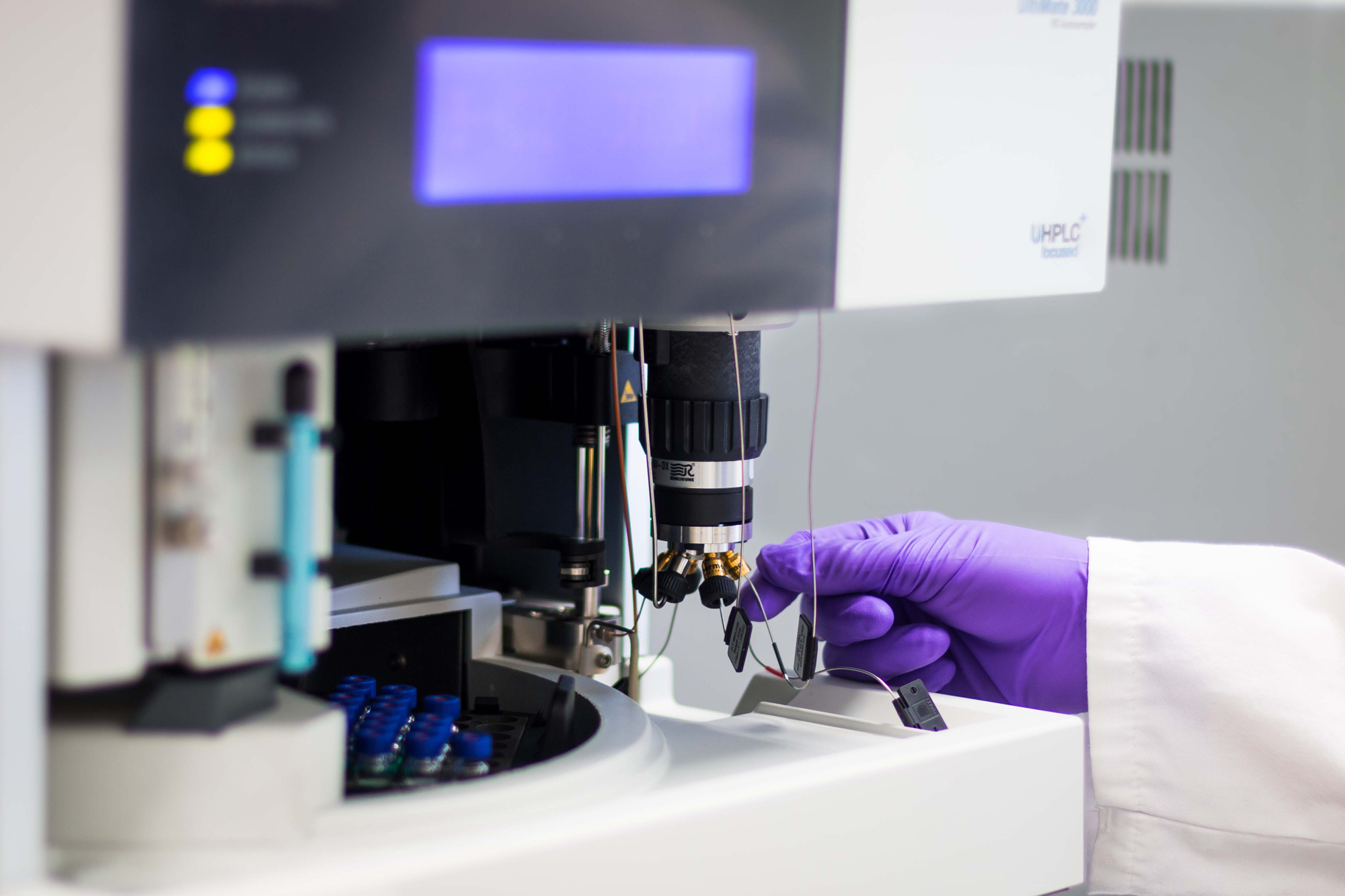Feature
Mass spectrometry and photometry for rAAV vector characterisation
Adeno-associated viruses (rAAV) are widely used as gene delivery vectors and several rAAV-based treatments have already been approved. Mass spectrometry and mass photometry are proving to be useful analytical tools in this process, but there are challenges to be overcome. By Sally Turner.

Credit: GettyImages
Mass spectrometry (MS) and mass photometry (MP) are two different analytical techniques that can be used to determine or estimate the mass of very large molecules, such as adeno-associated (AAV) vectors.
For decades, MS has been utilised for the structural characterisation of large, complex, biomolecules. The process involves ionisation of the molecule (typically by electrospray ionisation) and then measurement of the mass-to-charge (m/z) ratio of the molecular ion in the gas phase, using a variety of mass analysers like Time-of-Flight or Orbitrap.
Different MS instrumentation can be optimised to fit a specific purpose, such as intact mass determination, primary structure characterisation, and post-translational modifications. It all depends on the type of characterisation and what the requirements are.
A review article on AAV analysis by mass spectrometry, published earlier this year in the journal, Drug Discovery Today, was authored by Mahalia A. C. Serrano and her team, highlighting both the challenges and opportunities in this sphere. Serrano is principal scientist at Bristol Myers Squibb’s Biophysical Characterization and Mass Spectrometry Center of Excellence.
She explains that mass spectrometry is incredibly powerful for characterisation because it can probe the AAV from the intact vector particle level down to the molecular level of its component viral proteins.

Credit: Getty Images/Catherine Falls Commercial
Latest developments
Charge detection mass spectrometry is a promising development in MS for AAV vector characterisation, along with developments in capillary electrophoresis (CE-MS) and various other separation techniques.
“Charge detection MS (CDMS) for single-particle mass determination of intact AAV is a recent development,” says Serrano. “In CDMS, the m/z and the charge (z) of a single ion are simultaneously measured to directly determine its mass. This is accomplished by passing the molecular ion through a conducting tube that is sensitive to charge, where the magnitude of the induced signal is proportional to the ion’s charge (z). The particle’s mass is determined by multiplying its m/z and charge (z).”
A mass histogram is then generated by measuring thousands of individual particles in a sample. This provides a distribution of the different mass subpopulations which can then be used to determine the ratios of empty, partially filled, and full particles in that sample.
We’ve really seen things change in the last few years. Five to 10 years ago, it was a lot more of the wild west.
Dr. Riley Bove, associate professor of neurology at the University of California, San Francisco
In June 2022, Biogen announced its collaboration with Twill Health to develop a platform for multiple sclerosis (MS) patients. In the same month, Twill, previously known as Happify Health, also launched a digital platform with Almirall to improve the mental health of psoriasis patients using cognitive behavioral therapy and other approaches. Almirall markets the IL-23 inhibitor Ilumetri (tildrakizumab) to treat moderate to severe plaque psoriasis in Europe.
Several years ago, Bove led a pilot efficacy study on a videogame-based digital therapeutic and its use in MS patients. The study (NCT03569618) tested a videogame-based digital therapy for children with attention-deficit hyperactivity disorder (ADHD) that is sold by Akili Interactive as EndeavoRx.
Such a digital therapy approach would be especially interesting if combined with a medication that treats attention and fatigue, Bove says. In conditions like multiple sclerosis, there is a lot of interest in exercise and driving the remyelination of nerve fibers by physical activity, and EndeavoRx could be used with repurposed medications aimed at myelin repair, notes Bove.
In the future, digital therapeutics could serve as a complementary option that makes patients’ lives easier, says Dr. Jochen Klucken, chair of digital medicine at the University of Luxembourg. Generally, a cocktail approach of mixed approaches in the right combination can be beneficial to one’s health, Anguera adds. These tools could also be used to manage patient care and their medication, which is one of the challenges in today’s healthcare, he says.
Mass photometry
Mass photometry is a more recently developed technique that relies on the light-scattering signal of individual molecules deposited on a surface (e.g. coverslip) to determine the mass. It measures the interference between the light scattered by the molecule and the light reflected by the surface.
This interferometric contrast is proportional to the molecular mass of the particle – the AAV in this context. As with CDMS, a mass histogram can be produced by recording the interference patterns of thousands of individual particles and measuring the distribution of the different mass subpopulations. This can then be utilised to determine the ratios of empty, partially filled, and full particles, and possibly low molecular weight fragment species and aggregates.
“The main advantages of this MP technique are the relative ease and simplicity of operation,” explains Serrano, “and speed of analysis and the low amounts of sample required. However, this technique can only characterise AAVs at the intact level.”
Size – is bigger better?
AAV characterisation poses significant challenges because of its size (AAVs are in the millions of Daltons or MDa, compared to more conventional biotherapeutics like monoclonal antibodies which are in the hundred thousand Daltons).
The advent of CDMS has made it possible for accurate intact mass measurements of mega-Dalton sized AAVs to be achieved by ‘mass spec’, says Serrano:
“This has been a limitation for previous MS-based techniques. Commercialisation of CDMS instruments and software, along with optimisation and improvements in the workflow for ease of analysis will make this technique more available for users.”
Another major challenge in AAV characterisation is that AAVs are structurally complex and diverse. Three different viral proteins (VP1, VP2, VP3) are arranged to form the viral capsid, which encapsulates the viral genome (single-stranded viral DNA). Because AAV vectors have several components, it is a huge challenge to obtain homogeneous preparations.
“Even after extensive purification, AAV preparations may still contain considerable amounts of empty capsids, partially filled capsids, or capsids containing extraneous DNA,” explains Serrano. “The presence of empty capsids, in particular, is considered a critical quality attribute because of the risk of eliciting unwanted immune response and its impact on the AAV’s efficacy. CDMS is showing great promise in this regard because it is able to differentiate full capsids from empty and/or partially filled capsids.”
Another obstacle with AAV characterization is that typical yields of purified AAV material obtained in the laboratory scale are in the few millilitres, limiting the sample amount available for analysis.
“However, compared with other analytical tools like analytical ultracentrifugation MS analyses do not require large amounts of sample,” says Serrano. “I think MS will continue to be one of the methods of choice when it comes to AAV characterisation because it can deliver the resolution and accuracy needed for determining AAV particle heterogeneity and probe on residue-level modifications.”
She adds that in terms of providing accurate mass measurements, the resolution of MS is unmatched. MS is a highly specialised analytical technique, but with the emergence of even more sophisticated instrumentation like CDMS, the operational complexity, cost, and speed of analysis are some of the drawbacks.
Future outlook
There is still limited analytical and clinical knowledge and experience with AAVs compared with more conventional antibody-based biotherapeutics, and many aspects are still being studied.
“One aspect is how the relative ratios of VP1, VP2, and VP3 affects potency, infectivity and transduction efficiency of the vector,” explains Serrano. “Another is the biological relevance and impact of different posttranslational modifications (PTMs) on the capsid proteins. There have been reports correlating certain PTMs with loss of activity and differential T-cell immune response. The ability of MS to provide structural information down to residue-specific level is important for these types of structure-function relationship investigations.”
Mass spectrometry is emerging as one of the key characterisation techniques for the analysis of AAV gene therapy products. This is primarily because of its exceptional ability to obtain structural information ranging from molecular components to whole viral particles. With further commercialisation, automation, and software developments for ease of operation and data analysis, advanced techniques such as CDMS will play an increasingly important part in AAV analytics.